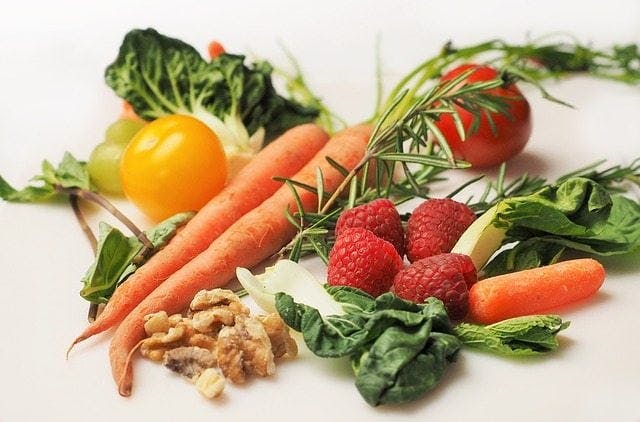
2023-03-27T14:47:45
Why you shouldn’t skip your next colon cancer screening
- Cancer Center
- Gastroenterology
September 14, 2016 | Gastroenterology
Specialties:Gastroenterology

Our busy lives often mean that we don’t eat as well as we’d like to. Ninety-one percent of U.S. adults don’t eat as many vegetables each day as they should. One way to ensure that you are getting enough vegetables, and that you are getting the full range of nutrition, is to aim for more colors on your plate. Looking at your plate to ensure it’s full of colors is an easy shortcut that lets you see that you are getting a wide range of vitamins, minerals and healthy antioxidants.
Fruits and vegetables often get their colors from the nutrients they have inside. Because these foods are generally low in fat and calories and provide complex carbohydrates that can give you energy and fiber that makes you feel full, they should have a starring role on your plate at every meal. A few of the benefits of each color of food:
White fruits and vegetables provide dietary fiber. Fiber helps protect against high LDL cholesterol levels, which, in turn, protects heart health.
Red foods include tomatoes, watermelon, cherries, beets and peppers. These are foods that are likely to be rich in the antioxidants anthocyanin and lycopene, which are valuable for heart health.
Orange and yellow foods get their hue from beta carotene, which your body converts to vitamin A. Vitamin A is vital to good bones and healthy skin.
Green vegetables provide vitamins C, K and E, which can all help support the immune system, healthy eyes and bones and reduce your risk of chronic diseases.
Blue and purple fruits and vegetables get their color from anthocyanins. Blue foods like blueberries have compounds that act as anti-inflammatories, reducing the risk of disease in your esophagus and colon.
It’s not always easy to introduce new foods to your diet. If you are not sure how to make a more colorful plate, try some of the tips below:
Are you concerned with getting the nutrition you need to stay healthy? Talk to your doctor about whether counseling with a nutritionist is right for you.
WRITTEN BY:
The Live Better Team

2023-03-27T14:47:45

2021-09-02T11:02:37

2018-02-28T12:25:41

2018-01-31T11:15:50
This information is not intended to replace the advice of a medical professional. You should always consult your doctor before making decisions about your health.